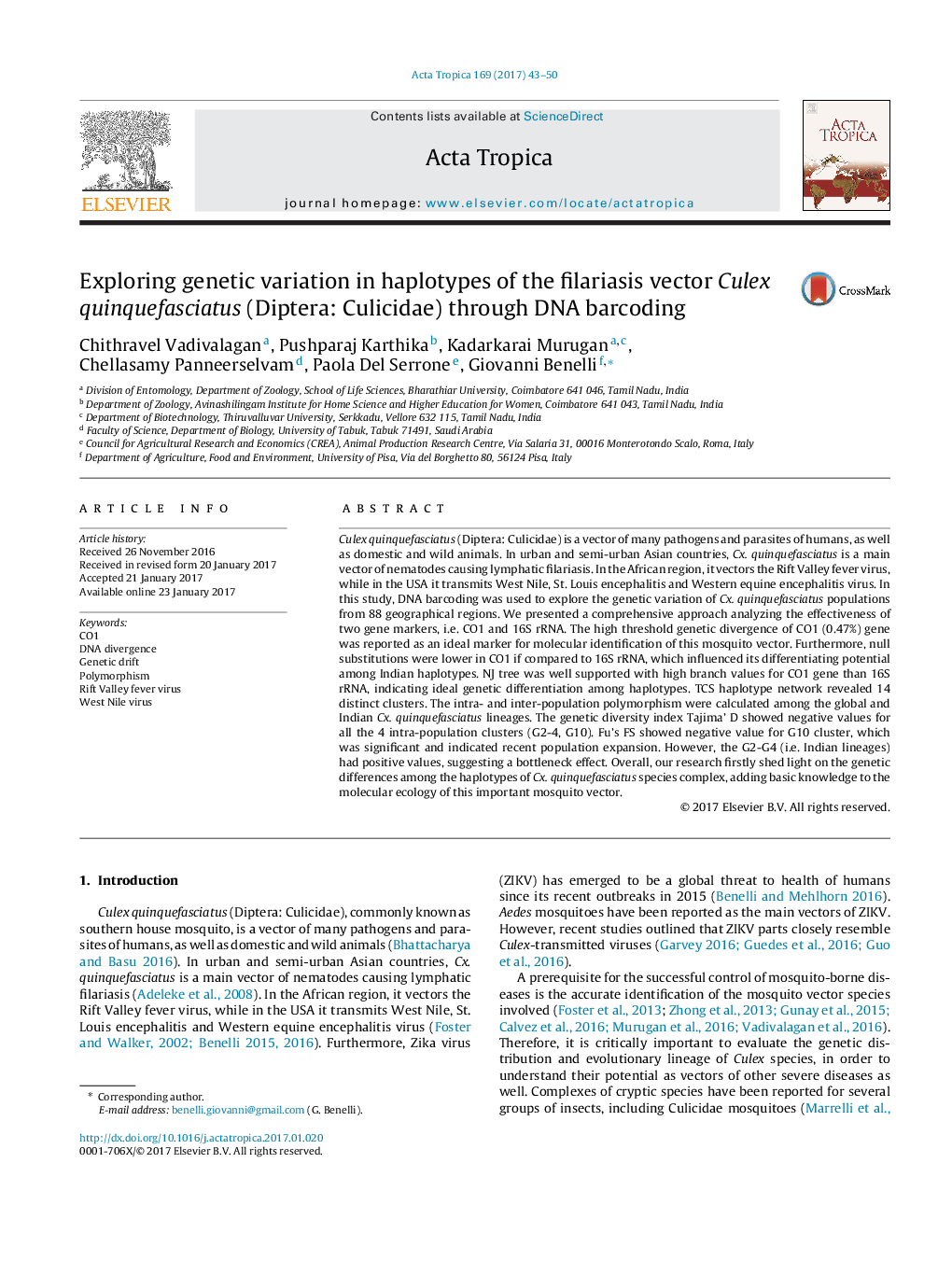| کد مقاله | کد نشریه | سال انتشار | مقاله انگلیسی | نسخه تمام متن |
|---|---|---|---|---|
| 5670857 | 1592755 | 2017 | 8 صفحه PDF | دانلود رایگان |

- DNA barcoding was used to explore genetic variation of Cx. quinquefasciatus from 88 sites.
- We evaluated the effectiveness of two gene markers, CO1 and 16S rRNA.
- Null substitutions were lower in CO1 if compared to 16S rRNA.
- TCS haplotype network revealed 14 distinct clusters.
- Intra- and inter-population polymorphism was calculated among global and Indian lineages.
Culex quinquefasciatus (Diptera: Culicidae) is a vector of many pathogens and parasites of humans, as well as domestic and wild animals. In urban and semi-urban Asian countries, Cx. quinquefasciatus is a main vector of nematodes causing lymphatic filariasis. In the African region, it vectors the Rift Valley fever virus, while in the USA it transmits West Nile, St. Louis encephalitis and Western equine encephalitis virus. In this study, DNA barcoding was used to explore the genetic variation of Cx. quinquefasciatus populations from 88 geographical regions. We presented a comprehensive approach analyzing the effectiveness of two gene markers, i.e. CO1 and 16S rRNA. The high threshold genetic divergence of CO1 (0.47%) gene was reported as an ideal marker for molecular identification of this mosquito vector. Furthermore, null substitutions were lower in CO1 if compared to 16S rRNA, which influenced its differentiating potential among Indian haplotypes. NJ tree was well supported with high branch values for CO1 gene than 16S rRNA, indicating ideal genetic differentiation among haplotypes. TCS haplotype network revealed 14 distinct clusters. The intra- and inter-population polymorphism were calculated among the global and Indian Cx. quinquefasciatus lineages. The genetic diversity index Tajima' D showed negative values for all the 4 intra-population clusters (G2-4, G10). Fu's FS showed negative value for G10 cluster, which was significant and indicated recent population expansion. However, the G2-G4 (i.e. Indian lineages) had positive values, suggesting a bottleneck effect. Overall, our research firstly shed light on the genetic differences among the haplotypes of Cx. quinquefasciatus species complex, adding basic knowledge to the molecular ecology of this important mosquito vector.
167
Journal: Acta Tropica - Volume 169, May 2017, Pages 43-50